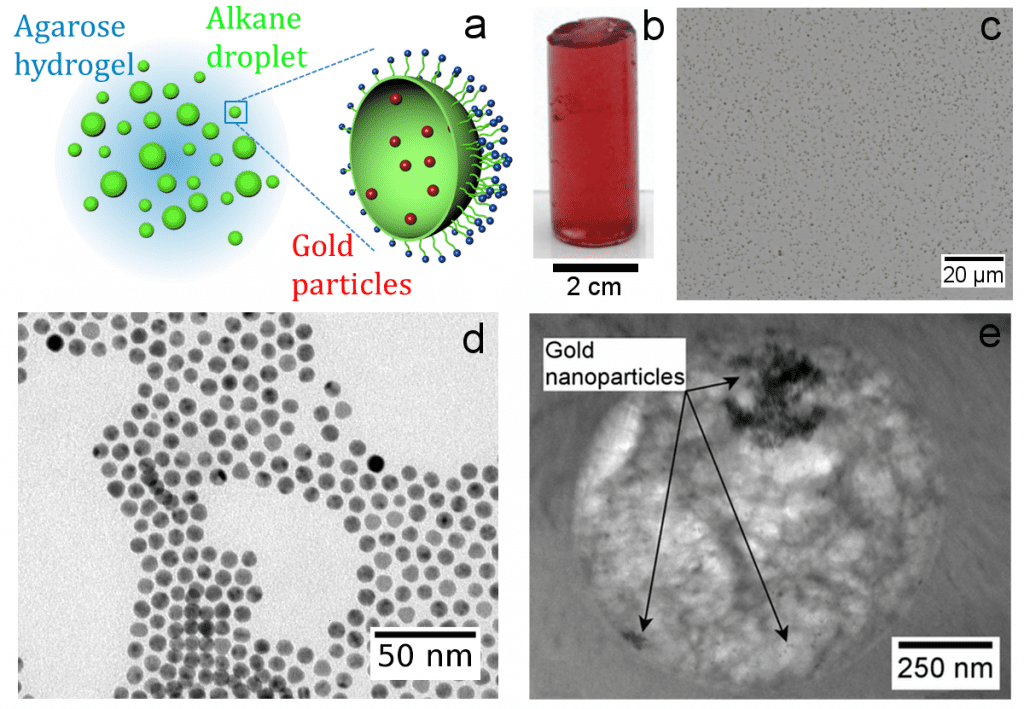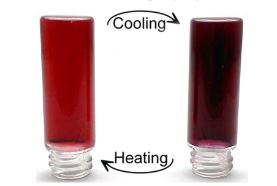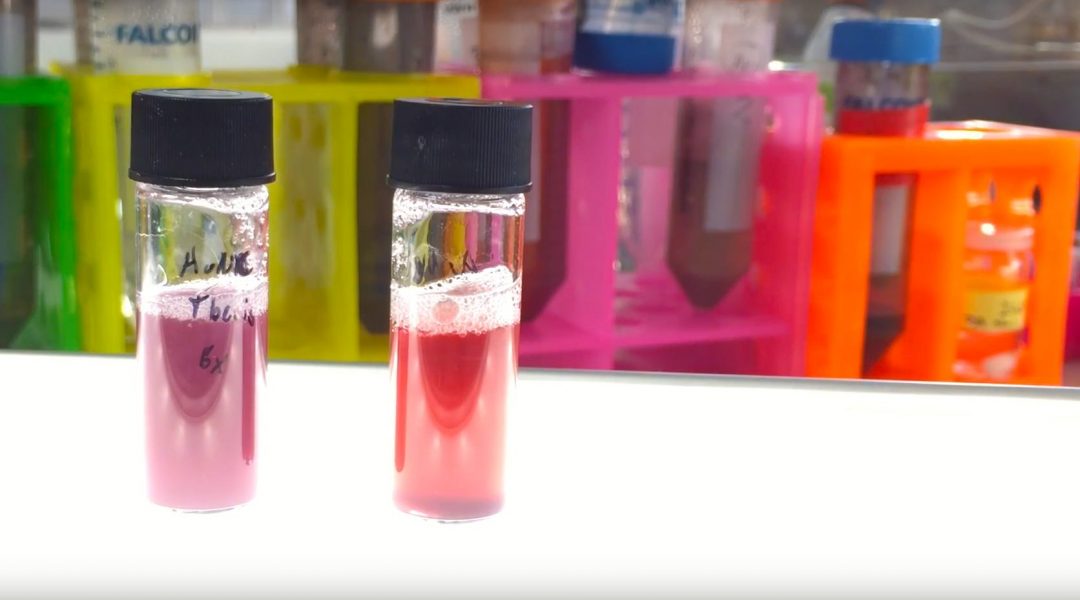Are too many salmonellae hiding in your tiramisu? Consumers might soon be able to gauge for themselves whether a dessert is unappetizing for this reason simply by looking at the food packaging.
With their novel method to visualize nanoparticle agglomeration in solid materials, Tobias Kraus from INM – Leibniz Institute for New Materials and Saarland University, along with his colleagues from INM, aim to ultimately achieve this goal.

Schematic illustration and microscopy images of the active nanocomposite.
Functional materials that respond to stimuli such as temperature and magnetic fluctuations have been investigated for some time. However, most of these materials are based on polymers that undergo a change as a whole in response to the stimulus.
On the other hand, biological entities can be embedded into materials while retaining their metabolic activity. This inspired Kraus and his colleagues to create stimuli-responsive materials based on gold nanoparticles that retain their ability to agglomerate when embedded into a nanocomposite.
How did they do this?
“The trick is to embed the particles into tiny oil droplets inside the material.”
The gold nanoparticles are first confined to oil droplets encapsulated in a hydrogel matrix. In water, the nanoparticles remain inside these oil droplets, forming an emulsion.

Upon heating the emulsion, the particles inside the droplets separate from each other, causing the material to appear bright red and more transparent. Cooling the emulsion leads to agglomeration, a darkening of the color, and lower transparency.
The principle behind the phenomenon has to do with the arrangement of particles inside the matrix. A shift in the particle arrangement can alter the optical, electrical, thermal, and magnetic properties of the system enough to cause macroscopic changes, including color changes. Normally, particles are static inside the matrix—the particles are mobile in this case, allowing the reversible agglomeration to take place.
The researchers are currently working on applying their method to more advanced stimuli.
Find out more about how these active nanocomposites work by reading the article in Advanced Materials.
The authors, through their institute, published a video on their manuscript here:

















